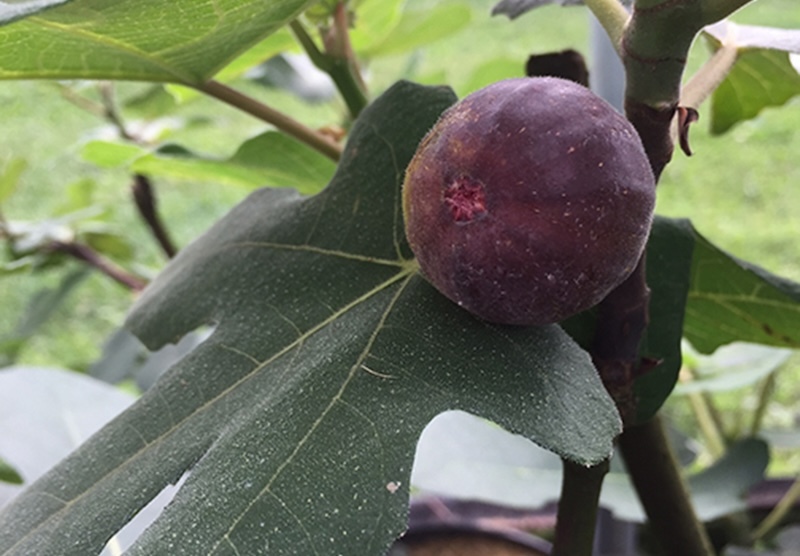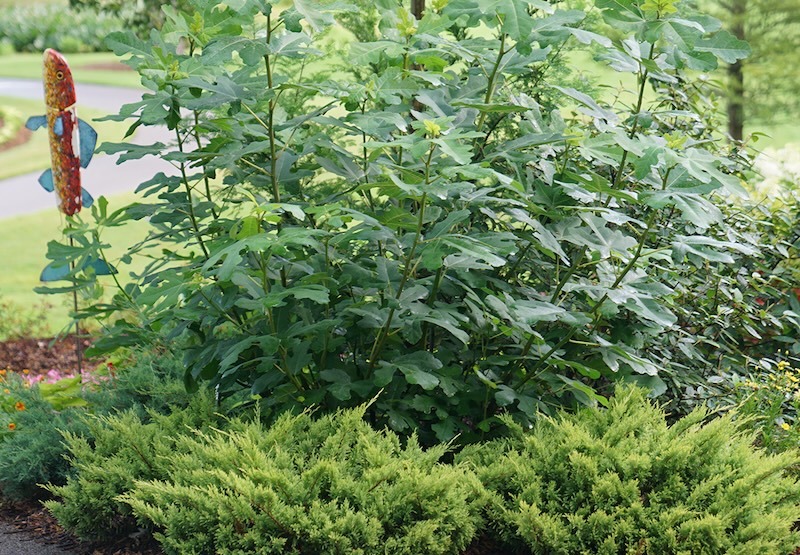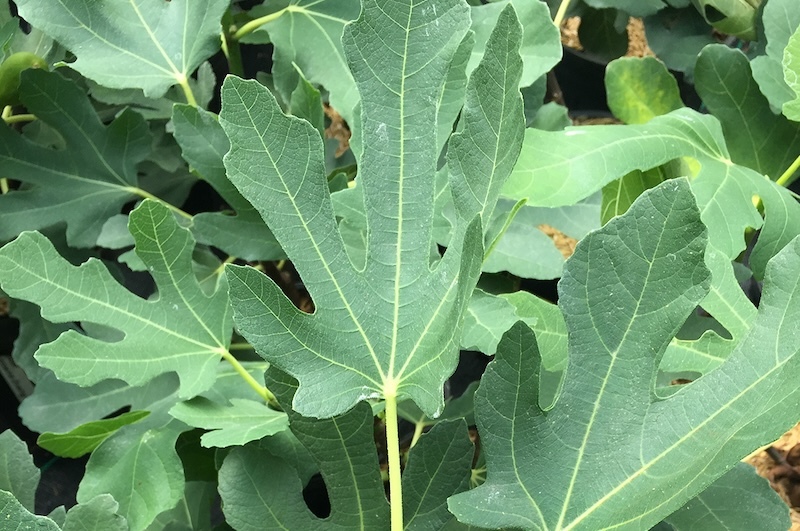Growing Fig Trees
Fig trees may be the most showy fruit plants while also being amazingly easy to grow. In climates with long hot summers, fig trees produce bumper crops of their pear-shaped, sweet fruit. The fruit is actually a collection of many flowers and fruit together in a bulbous, thin-skinned stem, collectively known as a syconia.

Ficus carica is related to the rubber fig houseplant (Ficus elastica) and contains an irritating sap that oozes out of freshly cut stems and branches. Use care when planting fig trees near areas where children and pets play to reduce their exposure to the plant sap.
Most types of edible fig trees are fully hardy in USDA zones 7-10, although hardier cultivars have been developed to withstand winter in zones 5 and 6. New smaller-growing varieties have made it possible for gardeners in colder climates to grow edible fig trees as a houseplant over the winter. These small trees still crop heavily.
Planting Fig Trees
Choose the location for your fig tree carefully. A spot in full sun with protection from harsh winds is ideal. Consider growing your tree against a south-facing wall in a trellised fan or double espaliered design. Growing the tree flat exposes the branches to more sun and will greatly increase your seasonal fruit yield. Fig trees require excellent drainage and perform best in deep, loamy soil to allow the roots to spread.

Watering Fig Trees
Fig trees are low-maintenance and require minimal watering after they have been established in the landscape. Figs planted in climates with dry summers will need at least half an inch of water a week during fruit development. Underwatered fig trees are notorious for not ripening their fruit. Soaker hoses or drip irrigation are ideal and direct water to the root zone without wetting the rest of the soil and encouraging weed seed germination.
Fertilizing Fig Trees
Fig trees planted directly into a garden bed rarely require extra nutrients. A thick layer of organic compost is typically sufficient for supporting vigorous growth. If the foliage yellows or fruiting begins to decline, apply a slow-release, granular fertilizer early in the spring. A balanced formulation will work, although fertilizers specifically marketed as fruit tree feeds are also available.
Container-grown fig trees require fertilizing 2-3 times during the growing season and respond best to diluted liquid fertilizers. Apply feeds in early spring, when the fruit is swelling, and possibly after fruit drop in climates with mild winters.

Pruning Fig Trees
Pruning is typically minimal for fig trees that are well-established in the warmer growing zones (>zone 7). In the spring, remove any winter-damaged and crossing branches, and thin the canopy to allow more light penetration. This is also the time to tie branches into an espalier framework. Most varieties fruit on the past season's growth, so only prune after fruiting for the best crops.
Cold hardy varieties like ‘Brown Turkey’ and ‘Hardy Chicago’ die back completely during the winter and produce fruit on new growth much later in the summer. New growth will emerge once the soil warms in spring. Cut the tree back hard to within 4-6 inches of the soil late in the winter or early spring to encourage a shrub-like shape.
Caring For Fig Trees in Pots
Containers are an excellent way to grow fig trees and move them to a protected location in the winter. The dwarf varieties of fig are the best choice, although larger types will grow slower and stay smaller when confined by a container. Start by planting your fig tree in a pot 2-3 inches wider than the root ball and size up each spring until it fits in a 20-inch diameter or larger container. Container-grown trees require excellent drainage at the bottom of the container. Water the tree regularly, only letting the top 3-4 inches of soil dry completely between sessions.
Winter Care For Fig Trees
The best way to overwinter a fig tree in cold climates is to plant it in a container that can be brought indoors. Place the tree in a south or southwest-facing window for the most sun exposure. Reduce the watering to once every 2 weeks, and only fertilize the plant once new growth begins in late winter.
Gardeners growing fig trees in borderline hardiness zones can try protecting outdoor trees with a thick layer of mulch, frost protection cloth, or other covering that will add insulation. The covering should also prevent any water or snow from sitting on the branches or the crown of the tree. With extra protection from cold winds and heavy snow, gardeners can harvest a late-season crop from mature fig trees.
Sources: Fig Culture in Northern Climates. Cornell University Cooperative Extension Nassau County. ccenassau.org
